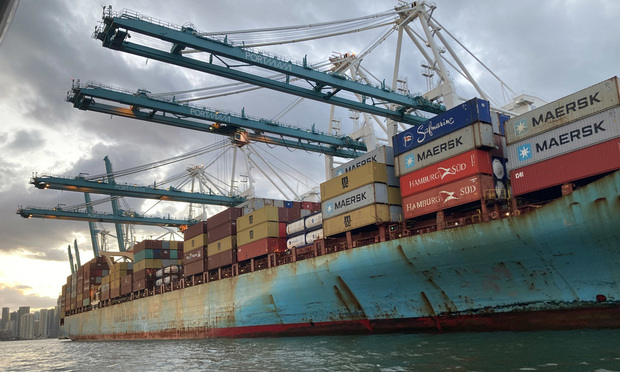SoCal Industrial Hits Inflection Point as Trade Policy Becomes More Clear

Despite a quieter start to the year in terms of sales activity—mainly due to ongoing policy and economic uncertainty—Southern California remains a compelling choice for strategic investment, according to a JLL Industrial Report for August.
Its limited supply and strong consumer base remain key drivers of interest, attracting both seasoned players and new entrants to the market.
The lack of clarity in trade and fiscal policy has prompted a cautious, wait-and-see stance throughout Q2 and into the summer. However, importers took advantage of the temporary tariff pause, leading to record-breaking port volumes in July. Recent trade agreements with several Asian partners have landed more favorably than anticipated.
Multi-Tenant, Small-Bay Outperforming
Michael Mullahey, vice president of acquisitions at MCA Realty, told GlobeSt.com that multi-tenant, small-bay industrial properties have continued to outperform other sectors of the industrial world.
“This has been driven by high replacement costs and a lack of available infill land, keeping vacancies relatively low and strong rents,” he said.
“While some markets have seen leasing velocity slow, leasing hasn’t fully dropped off, unlike larger industrial products. Many markets, including North County San Diego, Orange County, and Central Los Angeles, have continued to see small-bay rents grow. We hope that as we get more tariff certainty and a potential rate cut, exit cap rates will compress.”
Tariff Clarity is a Relief
While tariff levels remain elevated, the increased understanding of trade policy is enabling tenants to move forward with long-term planning. Although rising import costs could contribute to short-term inflation and dampen consumer spending, most economists anticipate that any slowdown will be modest and typical of cyclical adjustments.
For China, total exports increased for the first seven months of the year by 6.1% YoY. The pace increased in July, with growth of 7.2% to $322 billion, exceeding market expectations.
Chinese exports to the US dropped by 12.6% YTD, with July marking the fourth consecutive month of YoY decline, coinciding with the start of the tariff escalation.
Also, shares of imports from China through US ports fell to 54% this year, down from last year’s 62%.
While tariff rates are now the highest since 1934, they are lower than what was expected a few months ago. The loosening of restrictions on Beijing's rare earth exports to the US and the US’s restrictions on chip sales to China are positive developments for the bilateral trade relationship.
David Fan, JLL senior director of research for Southern California, told GlobeSt.com that the relative resilience of the Chinese third-party logistics stood out to him from the report.
“As a percentage of leasing activities [now 22.8%], they have declined as a group; however, looking at the total square footage [now 54.2%], they do not look bad at all,” Fan said.
“[China’s] ability to navigate the ebbs and flows of trade negotiations with great agility has been impressive. We are examining alternative lease terms and have noticed that longer leases bring them more in line with other types of tenants in the market. There is also some concern about the credit quality of this group.”
Submarkets Reaching Inflection Points
The recently enacted tax legislation, featuring permanent and expanded cuts, should stimulate growth across both retail and industrial sectors in the medium term. Tenants, including first-time market participants, are responding positively to more favorable rental conditions, reinforcing Southern California’s appeal.
Looking ahead, several submarkets may be approaching inflection points as availability becomes increasingly tight.
“While data can fluctuate from quarter to quarter, Central Los Angeles and the San Gabriel Valley are a couple of the submarkets in LA that have seen encouraging trends since last year,” Fan said.
Overall, supply continues to decline, and new construction starts remain minimal, signaling potential upward pressure on rents and increased competition for space.
Source: GlobeSt/ALM